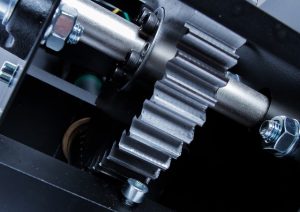
Manufacturing companies use a variety of processes to manipulate raw materials into finished processes, one of which is roll slitting. A type of shearing operating, it involves cutting large rolls of raw material into smaller, narrower rolls. Whether it’s iron, steel or even titanium, most materials can be cut via rolling slitting. To learn more about this manufacturing process and what it involves, keep reading.
Overview of Roll Slitting
The term “roll slitting” refers to a shearing operation in which a machine — known as a slitter — cuts rolls of raw material to make them smaller and narrower. It begins by taking a large roll of raw material — known as a master roll — and running it through the slitter. The slitter contains blades that, when exposed to the master roll, cut material off the sides. When the master roll comes out of the slitter, it will feature a smaller and narrower shape.
Log Slitting vs Rewind Slitting: What’s the Difference?
Roll slitting can be categorized as either log or rewind, depending on how it’s performed. Log slitting involves cutting material from the master roll without unrolling or re-rolling. In comparison, rewind slitting involves unrolling and re-rolling the web, which leads to the formation of waste known as mults or pancakes. Jargon aside, rewind slitting is a more comprehensive and time-consuming shearing operation.
Benefits of Roll Slitting
Roll slitting offers several benefits. For starters, it supports a variety of materials. Most materials can be reshaped using roll slitting. Plastic, paper and even adhesive tape can all be reshaped using roll slitting. Of course, this shearing operation also supports metals and alloys as well. For metals and alloys, blades typically aren’t used with roll slitting. Instead, roll slitting is performed on metals and alloys using an alternative cutting method that involves compressing the master roll between two cylinders.
Another benefit of roll slitting is the simple fact that it’s fast. Since it’s performed with a slitter machine, it doesn’t require much manual work. Rather, roll slitting is mostly an automated process that allows for faster manufacturing cycles.
In Conclusion
Roll slitting is a shearing operation in which a large roll of raw material is cut into a smaller and narrower shape. There are two main types of roll slitting: log and rewind. Both types involve cutting a large roll of material to achieve a smaller and narrower shape.
No tags for this post.